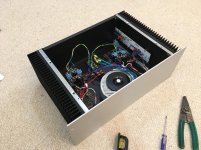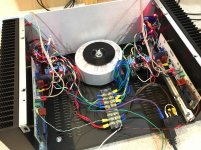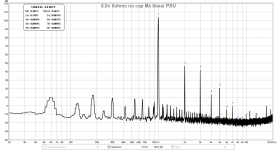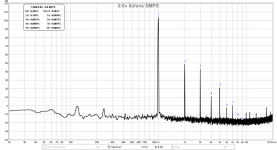are you sure that 4U x 300mm would suffice
looking at https://diyaudiostore.com/pages/40mm-heatsink-information https://diyaudiostore.com/pages/40mm-heatsink-information can not be better than conrad MF35 151
Is there anyone done that comparision
why don't you buy 2 pcs or 400 mm depth heatsinks per channel for 30 usd more then you can experiment with even bigger heat dissipation
looking at https://diyaudiostore.com/pages/40mm-heatsink-information https://diyaudiostore.com/pages/40mm-heatsink-information can not be better than conrad MF35 151
Is there anyone done that comparision
why don't you buy 2 pcs or 400 mm depth heatsinks per channel for 30 usd more then you can experiment with even bigger heat dissipation
even if I personally prefer 4U/400 (or even 4U/500 for heavier guns) , plenty of Greedy Boys already made their amps with that one , without too much complaints on temperature
I am using the same 165x300mm heatsinks in my J monoblocks and I get ~35-40c above room temp with 70w dissipated on each heatsink. For the cases only the sinks are aluminum the rest is a thermally nonconductive material.
Regards.
Regards.
Thank you for confirming that the 4U Dissipante case works for this amp. Greedy Boyz come through. 🙂
The problem is that the rear panel casework has to be all cut by hand for IEC and a Anna and RCA etc. the special $11 precut option is only available with aluminum top and bottom, which of course, is not really an option. So it's not an option altogether. Drill presses and Dremmel tool to save $150 is fine with me.
The problem is that the rear panel casework has to be all cut by hand for IEC and a Anna and RCA etc. the special $11 precut option is only available with aluminum top and bottom, which of course, is not really an option. So it's not an option altogether. Drill presses and Dremmel tool to save $150 is fine with me.
Last edited:
Dissipante 4U case with UMS heatsinks arrived. Nicely made. Looks like it will work well. I even found two pre-tapped holes for the MOSFETs.
no porn , no believing

I love this case. I am going to give it a test drive with my Teabag M2 as that has UMS spacing as well. While I was at it, I replace a crap 10uF X7R MLCC on C2 with an Elna Silmic 4.7uF x 2 to see if the sound improves. There is a 1uF 450v MKT film bypass there. The M2 redux will get all the bugs worked out as far as PSU, IEC, RCA, Banana outs, etc. Then stuff Babelfish J and swap out the amp boards. Easy Peasy.
Here is some amp porn for Greedy Boyz.
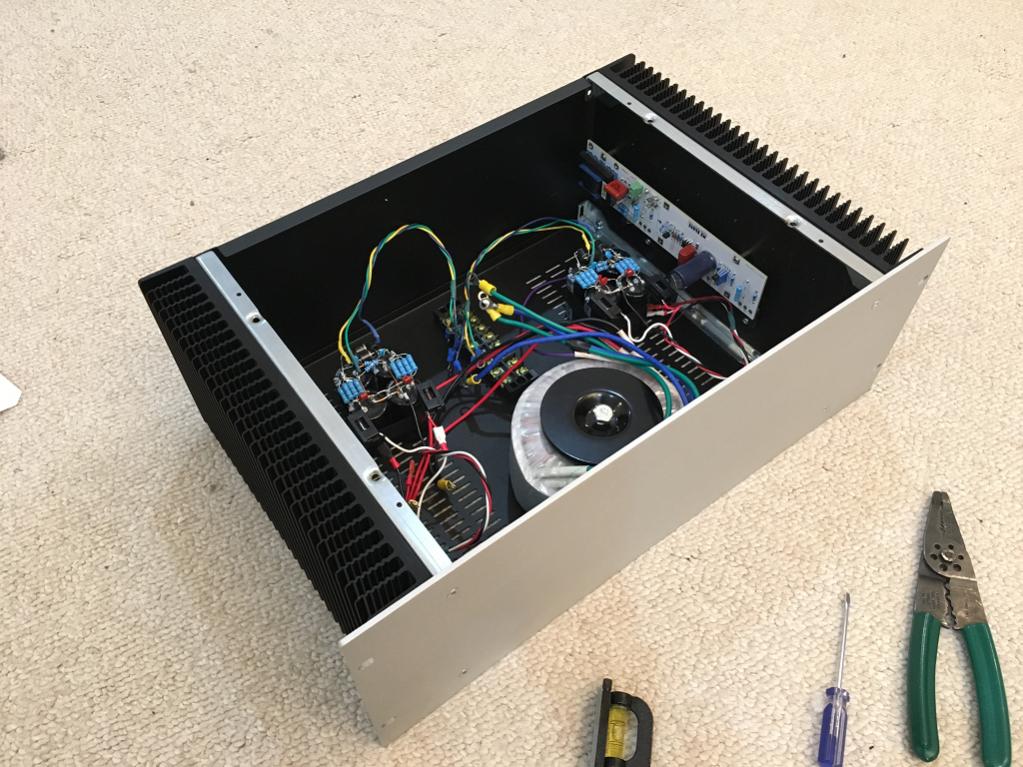
Attachments
Well I can only listen to one amp at a time so let's see which one gets to stay in the case long term. I have very few cased amps (2 dozen and only two have cases). 🙂
I have to say that the M2 now with the cap change and driven by Aksa's SE Class A CFP 2SA1837 headphone amp as a preamp, sounds wonderful. Very nice huge soundstage and singer appears to float in an ethereal 3d space in the room. Great smooth mids and tight bass on my Scan Speak 10F/Dayton RS225 FAST speakers. Really liking it - I may have to get a second case as you say. The 2SA1837 CFP preamp is key though. Without it - not as impressive.
I have MOSFET cap multipliers after the CRC here so rail voltage is +/-20.5V but PSU ripple is now less than 1mV.
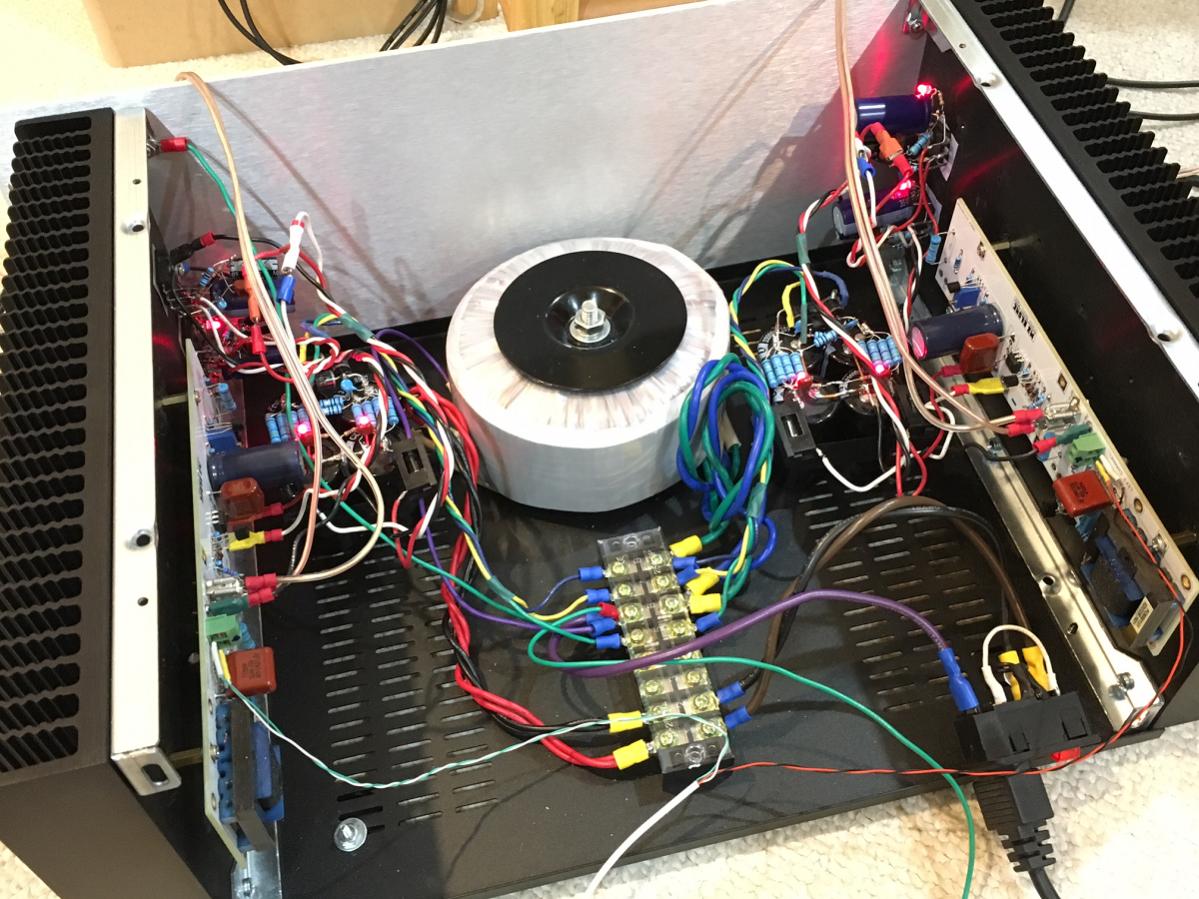
I have MOSFET cap multipliers after the CRC here so rail voltage is +/-20.5V but PSU ripple is now less than 1mV.

Attachments
Last edited:
Sort of off topic - but paving the ground for my Babelfish as the M2 in this case and PSU is the trial case. I'm not sure what's going on with my linear power supplies but now that I have a way to look at my FFT's - I see a forest of hash at harmonics of line frequency going up and up. It's low level so mostly inaudible. I am using a bridge and CRC very much standard: 400VA 18vac toroidal and bridge followed by 33mF // 4x0.47R(2W) // 33mF. I have 0.1uF 100v bypass caps on output. 330pF and 100R snubber on input to first cap to ground. Here's what I get from the M2 with my linear supply. Is there an obvious usual suspect that causes this? When I swapped to two SMPS bricks the hash disappeared - sort of makes we wonder why we deal with big heavy trafos.
Linear supply with trafo:
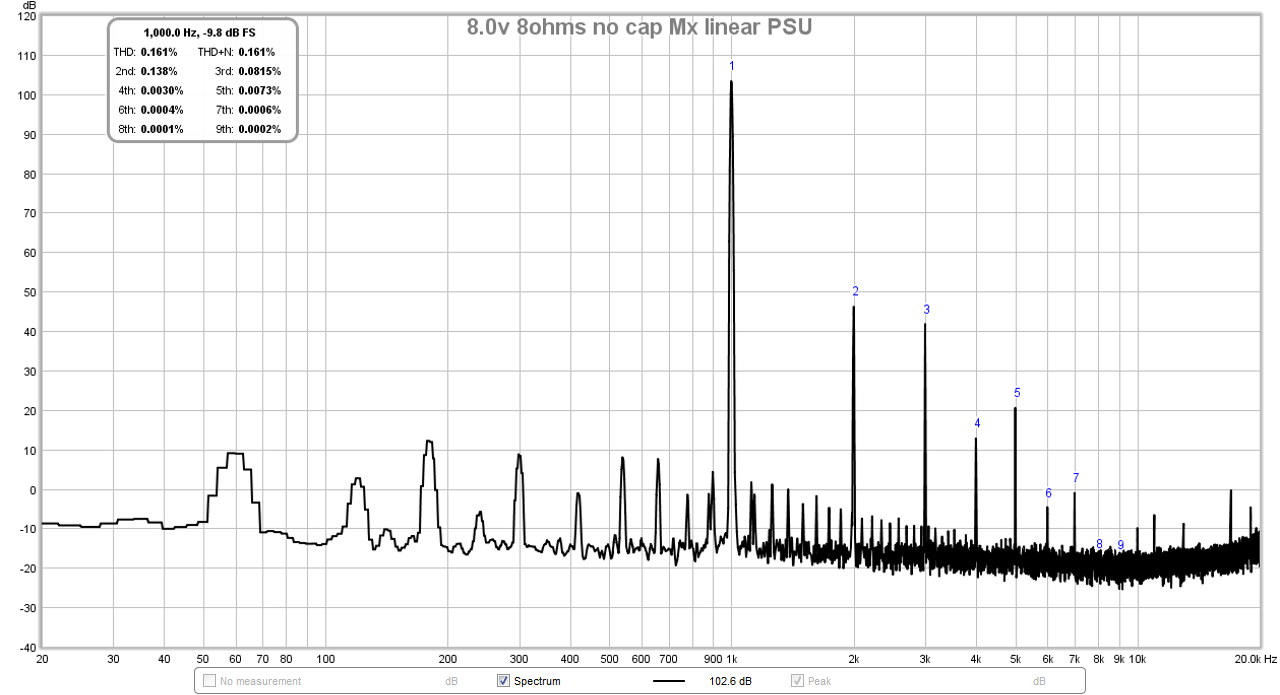
Two 24v 5amp SMPS bricks feeding same diode bridge and CRC filter as above:
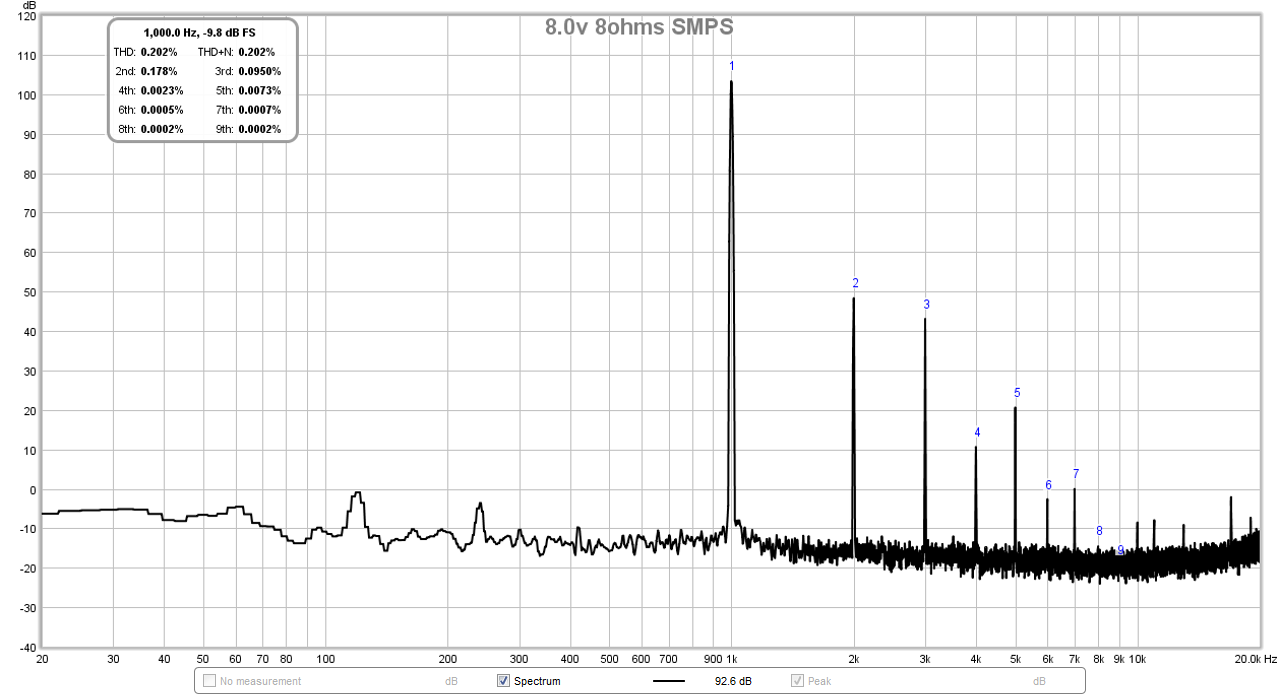
The SMPS supply is dead silent - no hum or hiss. I hear some hum with linear.
Linear supply with trafo:

Two 24v 5amp SMPS bricks feeding same diode bridge and CRC filter as above:

The SMPS supply is dead silent - no hum or hiss. I hear some hum with linear.
Attachments
Last edited:
Maybe I need to use Mark Johnson's Quasimodo bell ringer to optimize the snubber. It is trafo-cap LC ringing. Or put a pot where snubber resistor is and adjust to get rid of hash?
Dirty mains would show up on other things too - I just noticed it with linear trafo and bridge and CRC.
Would fast recovery MUR diodes each bypassed with 0.22uF help here?
One more suspect is EMI pickup from mains to input leads? Will investigate because since I installed the trafo already I want to use it despite the two SMPS bricks working like a champ. Works on ACA why not use on all 24v 1.25amp Pass designs?
Dirty mains would show up on other things too - I just noticed it with linear trafo and bridge and CRC.
Would fast recovery MUR diodes each bypassed with 0.22uF help here?
One more suspect is EMI pickup from mains to input leads? Will investigate because since I installed the trafo already I want to use it despite the two SMPS bricks working like a champ. Works on ACA why not use on all 24v 1.25amp Pass designs?
Last edited:
most probably highly subjective , but I'm avoiding switching supplies
if nothing else , one choice less to worry about
if nothing else , one choice less to worry about
Sort of off topic - but paving the ground for my Babelfish as the M2 in this case and PSU is the trial case. I'm not sure what's going on with my linear power supplies but now that I have a way to look at my FFT's - I see a forest of hash at harmonics of line frequency going up and up.
just accidentally saw this.
could this be the toroid magnetically spewing into the Edcor?
Do you have scope traces of the output in the two configurations?
Sort of off topic - but paving the ground for my Babelfish as the M2 in this case and PSU is the trial case. I'm not sure what's going on with my linear power supplies but now that I have a way to look at my FFT's - I see a forest of hash at harmonics of line frequency going up and up. It's low level so mostly inaudible. I am using a bridge and CRC very much standard: 400VA 18vac toroidal and bridge followed by 33mF // 4x0.47R(2W) // 33mF. I have 0.1uF 100v bypass caps on output. 330pF and 100R snubber on input to first cap to ground. Here's what I get from the M2 with my linear supply. Is there an obvious usual suspect that causes this? When I swapped to two SMPS bricks the hash disappeared - sort of makes we wonder why we deal with big heavy trafos.
Linear supply with trafo:

Two 24v 5amp SMPS bricks feeding same diode bridge and CRC filter as above:

The SMPS supply is dead silent - no hum or hiss. I hear some hum with linear.
If you want to start a new thread I will post my results.
Doesn't seem to be much interest.
I'll just say a Firstwatt F5 suffers from the same symptoms.
If you look at my F6, the Firstwatt F5 is worse, but I'm using 4 times the capacitance of a firstwatt product.
I might switch out the bridge rectifiers and install some hexfred ultra soft recovery diodes. If these show an improvement I'll post results.
I'll just say a Firstwatt F5 suffers from the same symptoms.
If you look at my F6, the Firstwatt F5 is worse, but I'm using 4 times the capacitance of a firstwatt product.
I might switch out the bridge rectifiers and install some hexfred ultra soft recovery diodes. If these show an improvement I'll post results.
- Home
- Amplifiers
- Pass Labs
- About possible Babelfish J interest
